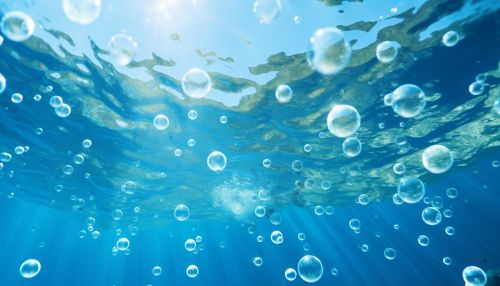The Chemistry of Ocean Acidification and Its Effects on Marine Organisms
Introduction
Ocean acidification is a significant environmental issue that is directly related to the increase in atmospheric carbon dioxide (CO2) levels. This phenomenon is caused by the absorption of CO2 by the ocean, leading to a decrease in the pH of the seawater, making it more acidic. This process has significant implications for marine organisms, particularly those that rely on calcium carbonate (CaCO3) for their skeletal structures, such as corals, mollusks, and some plankton species.
Chemistry of Ocean Acidification
The chemistry of ocean acidification is a complex process involving several chemical reactions. When CO2 is absorbed by seawater, it reacts with water (H2O) to form carbonic acid (H2CO3). This acid then dissociates into bicarbonate (HCO3-) and hydrogen ions (H+), further lowering the pH of the seawater. This process can be represented by the following chemical equation:
CO2 + H2O ⇌ H2CO3 ⇌ HCO3- + H+
The increase in H+ ions in the seawater results in a decrease in the availability of carbonate ions (CO3^2-), which are essential for the formation of CaCO3, the primary component of the shells and skeletons of many marine organisms. This decrease in carbonate ions can have detrimental effects on these organisms, as it makes it more difficult for them to form their shells and skeletons.


Effects on Marine Organisms
The effects of ocean acidification on marine organisms are varied and complex, with some organisms being more affected than others. The most vulnerable are those that rely on CaCO3 for their skeletal structures, as the decrease in carbonate ions makes it more difficult for them to form these structures.
Corals
Corals are particularly vulnerable to ocean acidification. They rely on CaCO3 to build their hard, protective skeletons. The decrease in carbonate ions in the seawater makes it more difficult for corals to build and maintain their skeletons, leading to slower growth rates and weaker structures. This can make corals more susceptible to other stressors, such as disease, bleaching, and storm damage.
Mollusks
Mollusks, including oysters, clams, and snails, also rely on CaCO3 to build their shells. Ocean acidification can make it more difficult for these organisms to form their shells, leading to thinner and weaker shells. This can make mollusks more vulnerable to predation and other environmental stressors.
Plankton
Some species of plankton, such as foraminifera and coccolithophores, also rely on CaCO3 for their shells. These tiny organisms form the base of the marine food web, and any changes to their populations can have significant effects on the entire marine ecosystem.
Mitigation and Adaptation Strategies
There are several strategies that can be used to mitigate the effects of ocean acidification on marine organisms. These include reducing CO2 emissions, enhancing the natural carbon sinks in the ocean, and developing strategies to help marine organisms adapt to the changing conditions.
Reducing CO2 Emissions
The most effective way to mitigate ocean acidification is to reduce CO2 emissions. This can be achieved through a variety of strategies, including increasing energy efficiency, transitioning to renewable energy sources, and implementing carbon capture and storage technologies.
Enhancing Natural Carbon Sinks
Another strategy is to enhance the natural carbon sinks in the ocean. This can be achieved through strategies such as ocean fertilization, which involves adding nutrients to the ocean to stimulate the growth of phytoplankton, which absorb CO2 through photosynthesis.
Adaptation Strategies
Finally, it may be possible to help marine organisms adapt to the changing conditions. This could involve breeding and selecting for individuals that are more tolerant of acidic conditions, or developing techniques to enhance the availability of carbonate ions in the seawater.
Conclusion
Ocean acidification is a significant environmental issue that has far-reaching implications for marine organisms and the ecosystems they inhabit. Understanding the chemistry of this process and its effects on marine organisms is crucial for developing effective mitigation and adaptation strategies.
